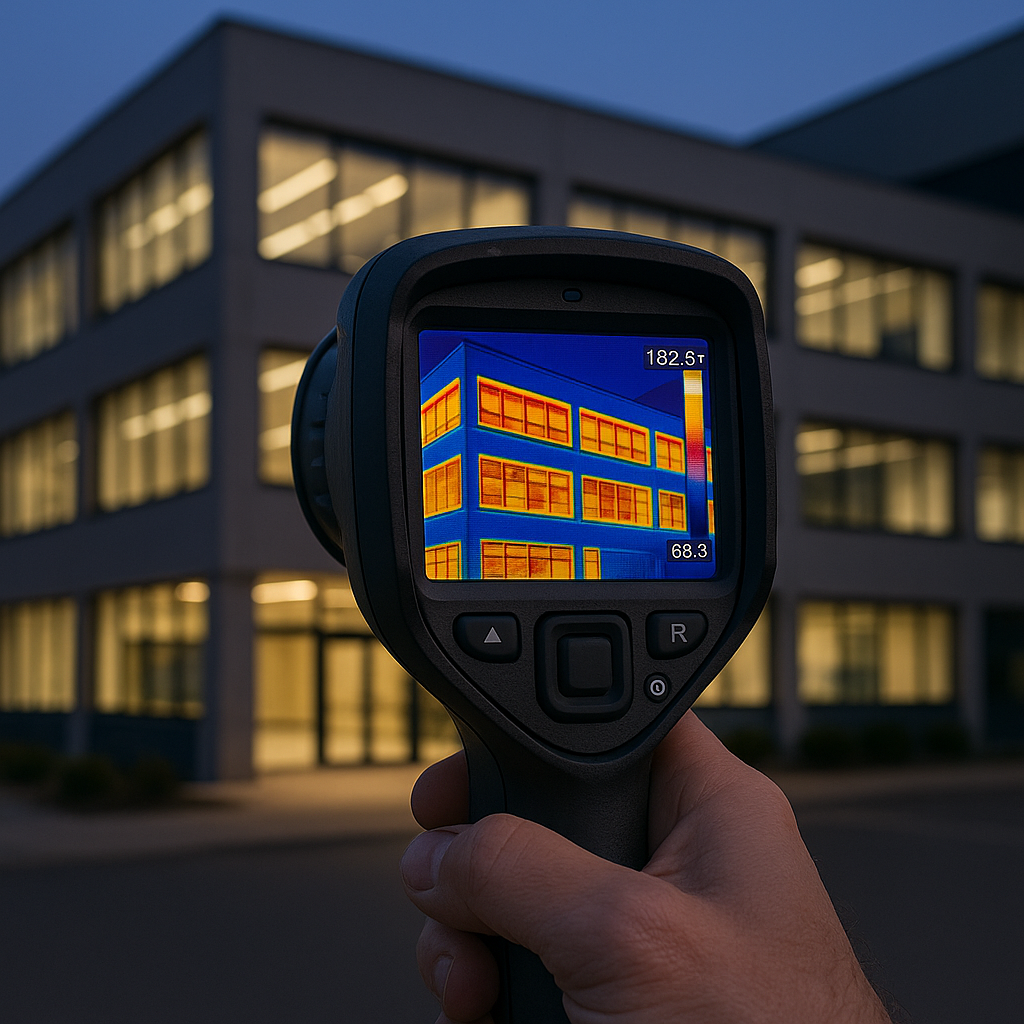The term building envelope may sound like industry jargon, but it plays a fundamental role in the performance, durability, and energy efficiency of any structure. As facility professionals and capital planners increasingly prioritize long-term cost control and sustainability, understanding the building envelope—and how to manage it proactively—has never been more important.
In this post, we’ll break down the core components of the building envelope, explore its influence on energy use and occupant comfort, and examine how targeted services like Building Envelope Commissioning (BECx) and roof and façade asset management can improve performance and lower operating costs over time.
What Is the Building Envelope?
The building envelope refers to the physical barrier between the interior and exterior of a building. It includes all the components that separate conditioned (heated or cooled) indoor space from the outdoor environment. These components work together to control temperature, moisture, air, and light—all of which affect the building’s performance, longevity, and energy demand.
Core Components of the Building Envelope:
- Roof: The topmost protective layer, which plays a critical role in insulating and shedding water.
- Exterior Walls / Facade: Includes cladding systems, air and moisture barriers, and insulation materials. Facades also affect aesthetics and structural performance.
- Windows and Doors: Critical interfaces that must balance light, views, and accessibility with airtightness and thermal performance.
- Foundation and Basement Walls: Often overlooked, these waterproofing elements must resist groundwater intrusion.
Each component has its own set of performance challenges, but collectively they form a single, interconnected system. If one element fails—or if multiple systems are misaligned—the result is often energy loss, water intrusion, or premature material degradation.
Why the Building Envelope Matters for Energy Efficiency
The building envelope is one of the most significant determinants of a facility’s energy use intensity (EUI)—especially in large-scale, commercial, institutional, or industrial facilities. The EUI is a standardized way of measuring a building’s energy consumption in relation to its size. According to the U.S. Department of Energy, building envelopes account for about 30% of heating and cooling energy use in commercial buildings 1. Poorly sealed or poorly insulated envelopes allow heat to escape in the winter and enter in the summer, forcing HVAC systems to work harder and consume more energy.
Key Functions That Support Efficiency:
- Thermal Control: Proper insulation and air sealing prevent unwanted heat transfer.
- Air Infiltration Control: Tight envelopes reduce drafts, humidity issues, and conditioned air loss.
- Moisture Management: Keeps rain and vapor out of the structure, protecting insulation and finishes.
- Solar Control: Glazing and facade materials affect how much solar heat enters the building.
When envelope systems are designed, constructed, and maintained with performance in mind, the benefits ripple outward: lower utility costs, more consistent indoor comfort, reduced emissions, and longer service life for interior systems.
How Technical Assurance Supports Building Envelope Performance
At Technical Assurance, our team provides comprehensive envelope consulting and programmatic services to help facility managers, capital planners, and owners meet performance and sustainability goals. Here’s how some of our core offerings support energy-efficient envelope design and operation:
Building Envelope Commissioning (BECx)
BECx is a structured, third-party process that ensures the building envelope meets defined performance objectives. It is most effective when applied early—during design and construction—but can also be adapted for existing buildings.
How BECx improves energy performance:
- Identifies envelope-related design gaps before construction
- Verifies continuity of insulation systems, air and vapor barriers, roof membranes as well as water resistance
- Provides envelope testing and field verification to ensure design performance is met during construction
- Prevents future envelope-related energy waste, comfort complaints, and/or repairs
BECx aligns with green building certifications like LEED and increasingly appears in state and federal procurement standards due to its impact on long-term operational efficiency.
Roof Consulting & Asset Management
Roof systems are often the largest single envelope investment for owners—and one of the most vulnerable. Thermal bridging, ponding water, and membrane deterioration can all lead to higher energy use and capital spend if not managed proactively.
Our approach includes:
- Detailed roof condition assessments and infrared moisture scans
- Life-cycle planning and repair prioritization
- Design and construction oversight for roof replacements
- Integration into facility-wide capital planning strategies
A well-maintained and properly insulated roof can reduce heating and cooling demand significantly, especially in large low slopped-roof structures where surface exposure is high.
Facade and Wall System Consulting
Vertical envelope systems—including walls, windows, and exterior cladding—must be watertight, airtight, and thermally efficient. However, these systems often feature complex transitions that can fail without coordinated detailing.
Facade services include:
- Forensic investigations and condition assessments
- Masonry and curtain wall restoration design
- Glazing system evaluation and repair strategies
- Field testing for air and water infiltration
Improved air sealing and insulation in facades can reduce HVAC demand by up to 20%, depending on climate and facility type 2.
The Bottom Line: Energy Efficiency Starts at the Edge
It’s easy to think of energy efficiency in terms of equipment—HVAC upgrades, controls, or lighting—but the building envelope defines the boundaries of performance. Without a well-functioning envelope, even the most advanced systems will struggle to deliver expected results.
Investing in the building envelope is one of the most cost-effective ways to reduce total cost of ownership, enhance occupant comfort, and meet sustainability goals.
If you’re ready to evaluate how your building envelope is performing—or want help integrating it into your capital plan—Technical Assurance can help. Contact us to learn more.
Sources:
1. U.S. Department of Energy. Building Energy Data Book: Chapter 3 – Commercial Sector. ↩
2. Energy Efficiency & Renewable Energy (EERE). Building Envelope Research. https://www.energy.gov/eere/buildings/building-envelope-research ↩

